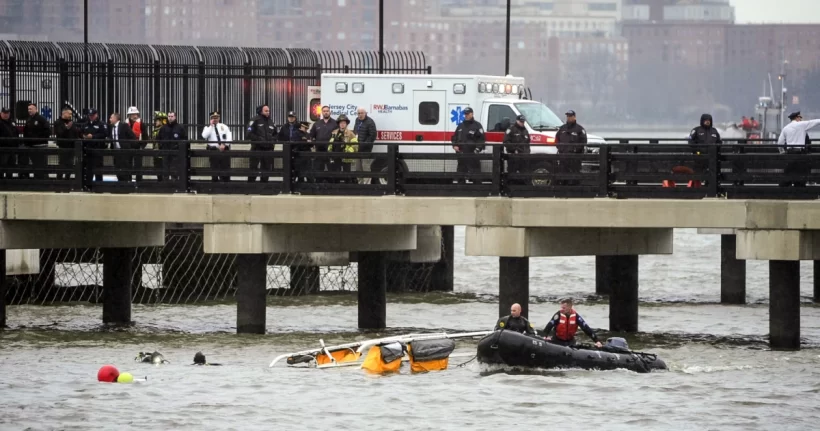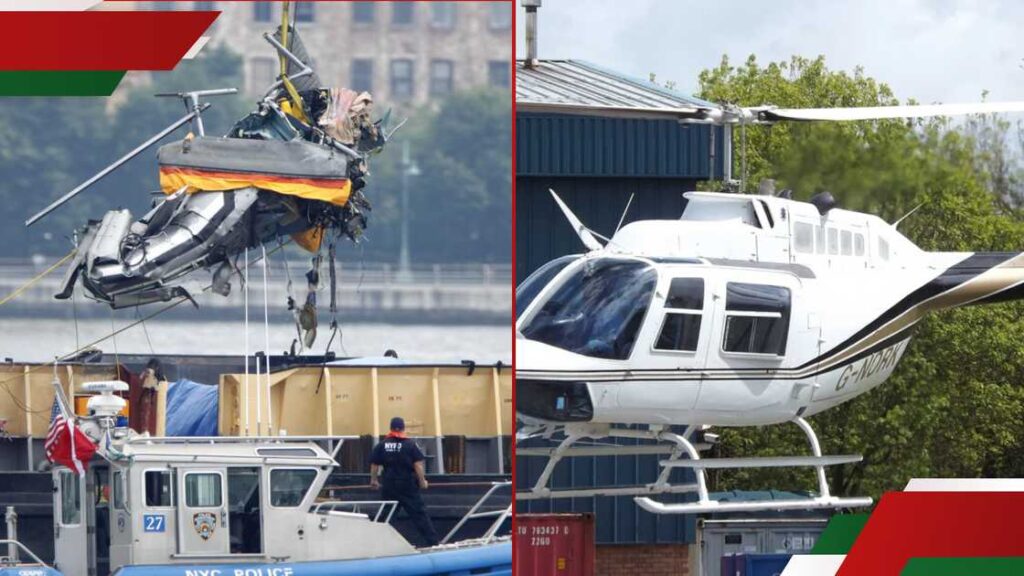Investigators Examine Fatal Hudson River Helicopter Crash Involving Six
The pilot of the tourist helicopter that crashed into the Hudson River on Thursday afternoon had no chance of saving himself or his five passengers once the aircraft’s rotor blades and tail boom detached midair, an aviation expert said on Friday.
A family of five from Spain, along with the helicopter’s 36-year-old pilot, perished in the crash on Thursday afternoon.
“Everything we train for as helicopter pilots assumes that the rotor system is still attached to the aircraft,” said Brandt Anderson, a former U.S. Army combat helicopter pilot and current policy adviser. “Once that’s gone, there are no wings, no way to glide — the helicopter simply falls from the sky.”
“It’s absolutely horrific,” he added.
At a Friday news conference, National Transportation Safety Board (NTSB) Chair Jennifer Homendy declined to speculate on a preliminary cause. She emphasized that the investigation is ongoing, with officials still searching for parts of the helicopter, interviewing witnesses, and reviewing records related to the operator, New York Helicopters, and its owner.
“We’re not ruling anything out,” Homendy said. “We take a thorough and detailed approach, and it’s far too early in the investigation to draw conclusions.”
The Bell 206 sightseeing helicopter took off from a downtown Manhattan heliport at 2:59 p.m., but the flight lasted less than 20 minutes. Eyewitness video captured the moment the rotor blades and fuselage separated midair, sending the helicopter spiraling and crashing upside-down into the Hudson River near Jersey City, New Jersey.
The crash claimed the lives of Agustín Escobar, CEO of rail infrastructure at German tech company Siemens, his wife Merce Camprubi Montal, their three children, and the pilot, Sean Johnson.
As of Friday, divers were still searching for key parts of the helicopter, including the main rotor, main transmission, and roof and tail components, according to Homendy.
Robert Joslin, a professor at Embry-Riddle Aeronautical University in Florida, explained that investigators will examine whether structural or impact failures caused the tail rotor to detach.
“Once the tail rotor comes off, it’s not just speculation – it’s physics,” he said. “Without the tail boom, the helicopter becomes unstable and begins to tumble.”
Investigators Examine Fatal Hudson River Helicopter Crash Involving Six.
The FAA has announced a temporary suspension of all air traffic near the site of the Hudson River helicopter crash.
Airspace over Manhattan is typically crowded, with a mix of private, tourist, and commercial helicopters and airplanes. Several helipads across the borough serve as launch points for business travelers and other passengers heading to various parts of the city and beyond.
Since 1977, at least 38 people have lost their lives in helicopter incidents in New York City. One of the most devastating occurred in 2009, when a plane collided with a sightseeing helicopter over the Hudson, killing nine people. Another tragic event in 2018 involved a chartered “open door” helicopter that crashed into the East River, resulting in five fatalities.
In June 2013, New York Helicopters operated a Bell 206 that experienced an engine failure mid-flight during a sightseeing trip. The pilot successfully executed an emergency landing on the Hudson River. All passengers – a Swedish family of four – were unharmed. Investigators later attributed the failure to a maintenance oversight and an issue with engine lubrication.
Before Thursday’s incident, the most recent helicopter crash in the city occurred in 2019, when an aircraft crashed into the roof of a skyscraper, killing the pilot.
For more updates about Investigators Examine Fatal Hudson River Helicopter Crash Involving Six, visit www.iasmania.com. Please share your thoughts and comments.











